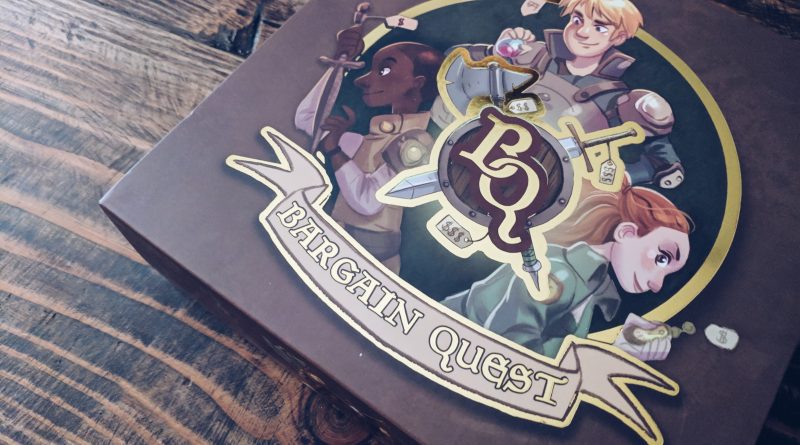Bargain Quest
In today’s review, designer Jonathan Ying (Star Wars: Imperial Assault, Doom) and his sister Victoria Ying (author, illustrator) team up to bring us Bargain Quest – a card drafting, bidding game that manages a unique take on the fantasy genre. In Bargain Quest, your town is besieged by a variety of monstrous creatures. You are a shrewd business owner. Naturally, you’re trying to capitalize on the situation by selling your wares to the various heroes that have come to test their mettle against said monstrous creatures. Business is business, am I right? Of course I’m right. Let’s take a look.

The art in Bargain Quest is phenomenal. This should come as no surprise. Artist Victoria Ying is known for her work on films like Tangled, Frozen, and Big Hero 6, and her art style lends itself extremely well to the playful theme of the game. Production quality is pretty good, though some of the cards have some color inconsistency, which is most noticeable when looking at card backs.The game also features “Item shops” which are basically foldable player boards, which is a super neat concept. The problem is that, because of how they fold, these player boards tend not to sit completely flat – to me this is not a huge issue, but I still find it worth mentioning.


Setup is pretty standard fare – everyone gets a player board and some starting currency, various card decks are sorted and set up into their respective decks, a monster is revealed, some heroes are revealed and given some money, and the game is ready to go. The rulebook does a good job of explaining this process succinctly, and gives good visual examples.
As I play more and more games, I’ve grown to appreciate when games either include some kind of quick reference card or an easy to locate player reference in the rule book. Bargain Quest includes a great quick reference right on the back of the rulebook, and it’s pretty much all we used after our first game.



The goal in Bargain Quest is to be the player with the most points by the end of the game. Points are accumulated mostly by amassing wealth and product placement (having your wares involved in the defeat of monsters). Players will receive one point for every ten coins they have, and one point for each star token they have at the end of the game.
Bargain Quest is played in rounds, and each round is divided into six steps. Supply, Display, Shop, Adventure, Upgrade, and Storage. The basic flow goes like this. New cards are dealt and drafted, then players pick an item to go in the front window of their shop – this item cannot be purchased, but serves to lure in customers. Then, starting with the player with the highest appeal value in their display (heart icons), players pick a hero to invite into their shop, and sell them as much gear as they can. Armed with your gear, heroes then face the current monster. If they survive, they come back to town with some extra loot (ca-ching!). Next, you have the option to upgrade your shop by hiring employees or upgrading storage or display space. Finally, if you have items left, you can choose to store one (or more with upgrades) of them to use in the next round. Then the whole thing starts over – this continues until all monsters are defeated, or until there are no more heroes to draw.

The fact that items are drafted keeps the game pretty well balanced, even if one player gets a decent lead. Preventing the purchase of display items further puts this in check by preventing one really good card from causing imbalance – you either have to sacrifice the good card to lure in the hero you want, or risk someone else luring that hero ahead of you. I love the fact that the game focuses on the business with only an afterthought to the heroes and monsters – while you do get perks for keeping heroes alive, you can do just as well by milking them for all they’re worth and letting them fail. Of course, selling them everything you can usually ends up helping them, even if it wasn’t your intention – but you get the idea.



Granted, I’m unabashedly drawn to anything in the fantasy genre, even if it isn’t particularly innovative. I know that I’m not alone in that sentiment, but I also know that there is another camp of gamers who find the fantasy theme to be oversaturated and repetitive. While the fantasy genre is most definitely saturated, I assure you Bargain Quest is not contributing to that problem. If anything, Bargain Quest is doing all fantasy lovers a service – by taking the well loved fantasy setting and transforming it into something fresh. Its quirky, it’s got great art, it plays smoothly, it’s easy to teach, and most of all, it’s fun even after multiple plays. I played with my nephew (9) and he immediately asked to play again – and has continued to ask to play it every time I’ve seen him since.
Review copy provided by Jonathan Ying.
Publisher: Jonathan Ying
Number of Players: 2-6
Age: 8+
Price at time of Review: $40
If you are interested in making a purchase based on this review, please consider using our affiliate link. If you do, we will receive a small commission.
Repost of original review from February 2019

